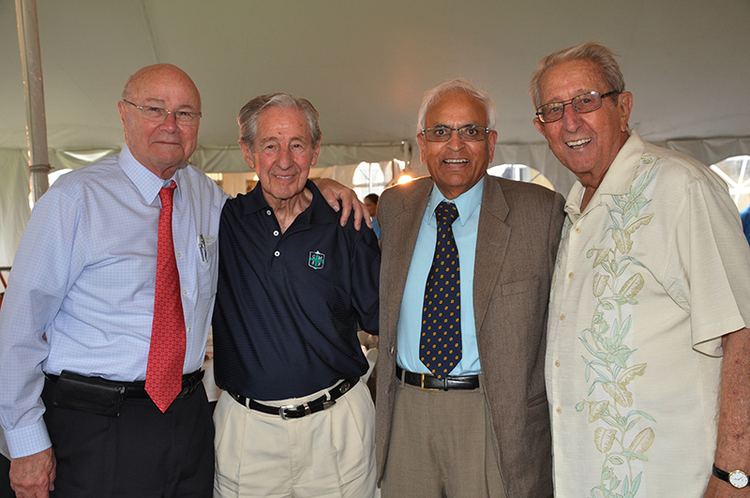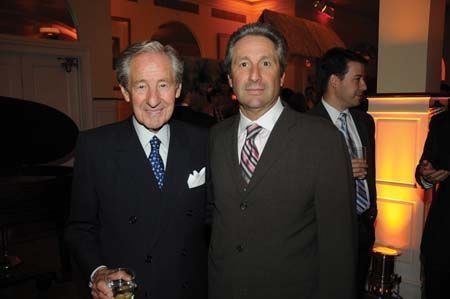Name Thomas Gambino Role Mobster | ||
 | ||
Born August 23, 1929 (age 91) New York City, U.S. Similar Carlo Gambino, Thomas Bilotti, Rosario Gambino | ||
Thomas "Tommy" Gambino (born 1929) is a New York City mobster and a longtime caporegime of the Gambino crime family who successfully controlled lucrative trucking rackets in the New York City Garment District.
Contents
- Crime Tax Thomas and Joesph Gambino The Garment District 1992 93
- Early life
- Castellano regime
- Gotti regime
- Indictment and prison
- Popular culture
- References

Crime Tax - Thomas and Joesph Gambino & The Garment District (1992-93)
Early life

Born in 1929, Thomas Gambino is the oldest son of Carlo and Catherine Gambino. Carlo Gambino joined the original Mangano crime family during the 1930s, rose to capo and later to underboss. In 1957, Carlo Gambino became boss of what is now called the Gambino crime family. Carlo Gambino became one of the most powerful mobsters in Cosa Nostra history.

Thomas Gambino graduated from Manhattan College in the Bronx and then started working for the Gambino family. In 1962, Thomas Gambino married Frances Lucchese, the daughter of Gaetano "Tommy Brown" Lucchese, the boss of the Lucchese crime family. Carlo Gambino welcomed this marriage as a chance to build ties between the Gambino and Lucchese families. Sometime during the 1950s, Carlo Gambino procured a job for Thomas Gambino at Consolidated Carriers Corporation as payment for handling union problems. After the owners of Consolidated retired, the Gambinos took over the company. When Tommy Lucchese died in 1967, his interests in the garment industry were passed to Thomas Gambino, forming the basis of Gambino's wealth.
By the 1990s, Thomas Gambino owned three homes; one in Florida, another in Lido Beach, New York, and a third on Manhattan's exclusive Upper East Side. Thomas Gambino also headed the Gambino Medical and Science Foundation, which in 1991 financed a $2 million pediatric bone marrow transplant unit at Long Island Jewish Medical Center. Estimates of Thomas Gambino's personal wealth go up to $75 million.
Castellano regime
After Carlo Gambino died on October 15, 1976, his designated successor, Paul Castellano, became the new family boss. Many family members were angered by Castellano's ascension, preferring underboss Aniello "Mr. Neil" Dellacroce instead. However, Dellacroce insisted that his supporters support Castellano for the good of the family. This move temporarily quieted the dissension in the Gambino ranks.
In contrast, Thomas Gambino, who was Castellano's nephew, enjoyed a strong relationship with the new boss. Gambino epitomized the low-profile, well buffered, successful businessman image common among second generation members of the Cosa Nostra. Given his college education, Castellano gave him responsibility for the family finances and running the trucking at the Garment District in Manhattan. Gambino and his allies in the Lucchese family were successful at infiltrating several legitimate businesses, especially the garment industry. This was due to Gambino's strong influence on the garment trucking business in New York and New Jersey. In 1981, the garment industry honored Gambino as its Man of the Year. Castellano quickly rewarded Gambino by making him a full family member, or "made man" and later a capo of his own crew.
In December 1985, the death of underboss Dellacroce brought the simmering dissension in the Gambino family to a head. Instead of selecting an established and respected capo to be the new underboss, Castellano instead chose his driver, Thomas "Tommy" Bilotti. At this point, capo John Gotti and Frank DeCicco saw the opportunity to capitalize on this discontent to kill Castellano and take over the family leadership. On December 16, 1985, both Castellano and Bilotti were murdered by Gotti gunmen in a restaurant ambush. Gambino, who was not part of the conspiracy, arrived at the restaurant moments after the killing, to be turned away by DeCicco. Gotti was then elected the new boss of the Gambino family.
Gotti regime
Although Gambino had been a Castellano loyalist, he quickly paid loyalty to Gotti and was able to preserve his position within the family. Since Gambino was such a strong earner for the family, Gotti did not want to replace him. In a conversation with Gambino mobster George Remini, Gotti had this comment about Gambino:
'I mean it sounds crazy, Georgie, but I was telling Frankie and Angelo, I'm gonna suggest to Tommy, we're gonna beef up his regime, Tommy Gambino, but we're not giving him no (expletive deleted) hotheads.
In April 1989, Gambino was indicted for obstruction of justice by lying to a grand jury about Gambino racketeering activities, but was acquitted later that year. On October 18, 1990, Gambino was indicted again on charges of extorting the garment industry. Through their ownership of four trucking companies, the Gambinos were able to charge shipping rates 40% higher than smaller non-mob shipping companies. Some of the strongest evidence in this case came from wiretapped conversations six years earlier between Gambino and Castellano at Castellano's Staten Island home. The conversation proved that the Gambinos and two other crime families exercised strong control over the Garment District. The government also set up a small garment factory in the Chinatown section of Manhattan, with New York State Police officers posing as supervisors, to gain evidence against Gambino's trucking monopoly.
The government offered Gambino a plea bargain that included a guilty admission, a $12 million restitution payment, and a promise to leave the garment trucking business. In February 1992, Gambino accepted the plea bargain and avoided prison. Prosecutors would remark that a "terrifying fear of prison" helped motivate Gambino to accept the government deal.
Indictment and prison
In 1991, Gambino, Gotti, Salvatore "Sammy the Bull" Gravano and other Gambino mobsters were indicted on charges of racketeering, loansharking, extortion, illegal gambling and 11 counts of murder. Soon after the indictment, Gravano decided to become a government witness and testified against his former colleagues, including Gambino.
On May 11, 1993, Gambino was convicted of two counts of racketeering and racketeering conspiracy. Prosecutors claimed that Gambino had been supervising illegal gambling and loansharking activities in Connecticut since 1985. In January 1996, Gambino started serving a five-year prison sentence.
In May 1999, the U.S. Securities and Exchange Commission (SEC) filed fraud charges against Gambino's stockbroker, Mohammed Ali Khan. While still in prison, Gambino had sued Khan for defrauding him out of approximately $2 million.
On May 10, 2000, Gambino was released from prison. He has moved to Florida and is now believed to be retired.
